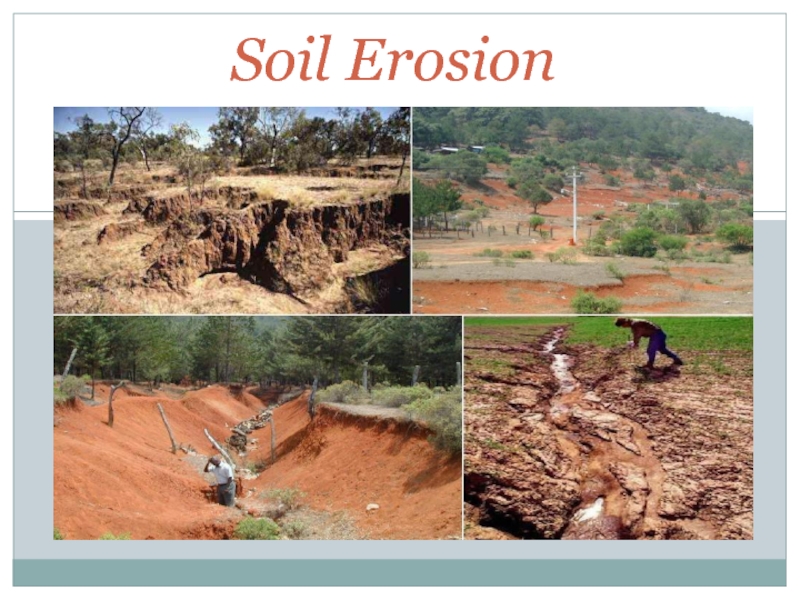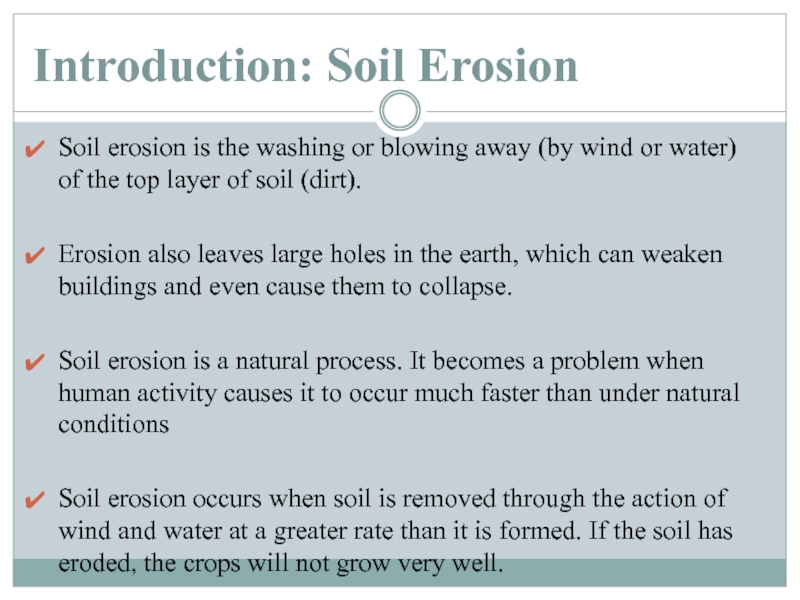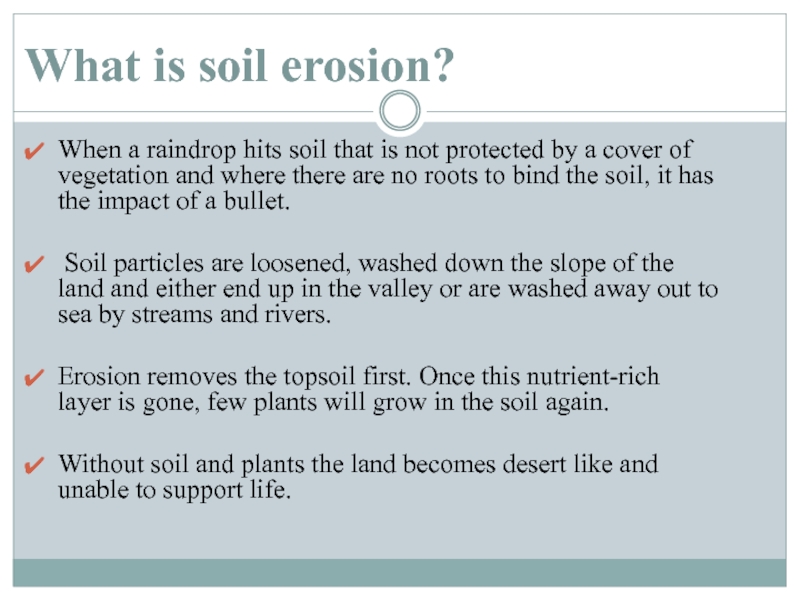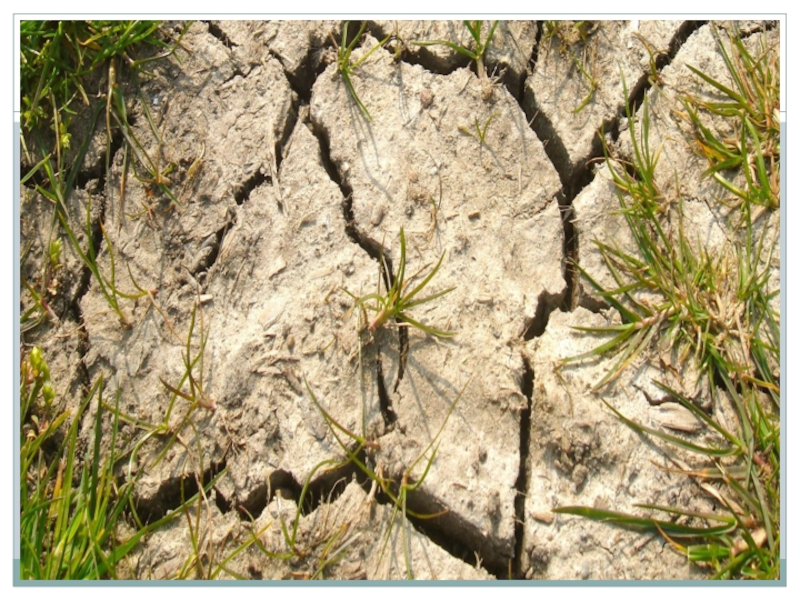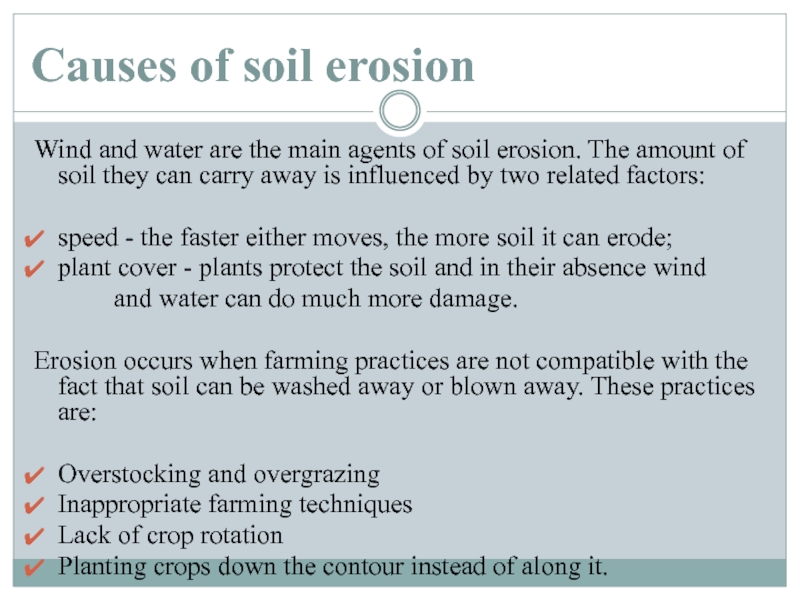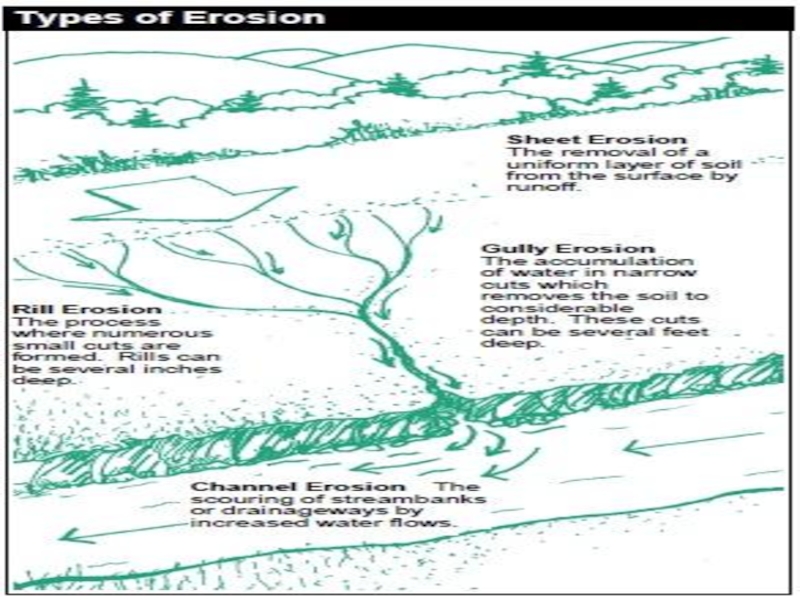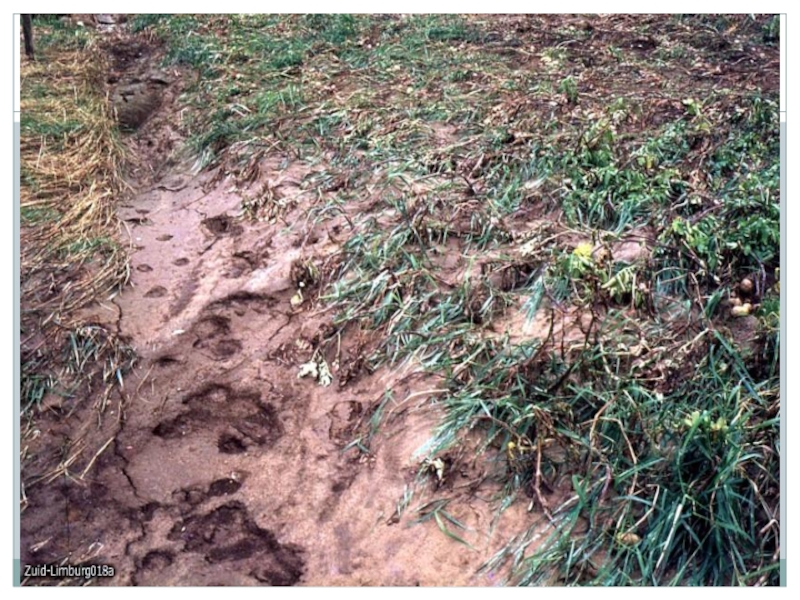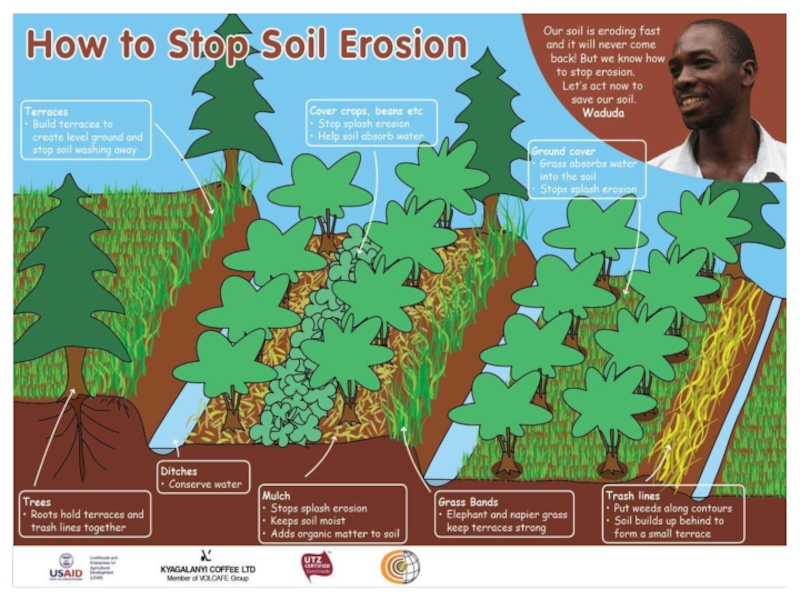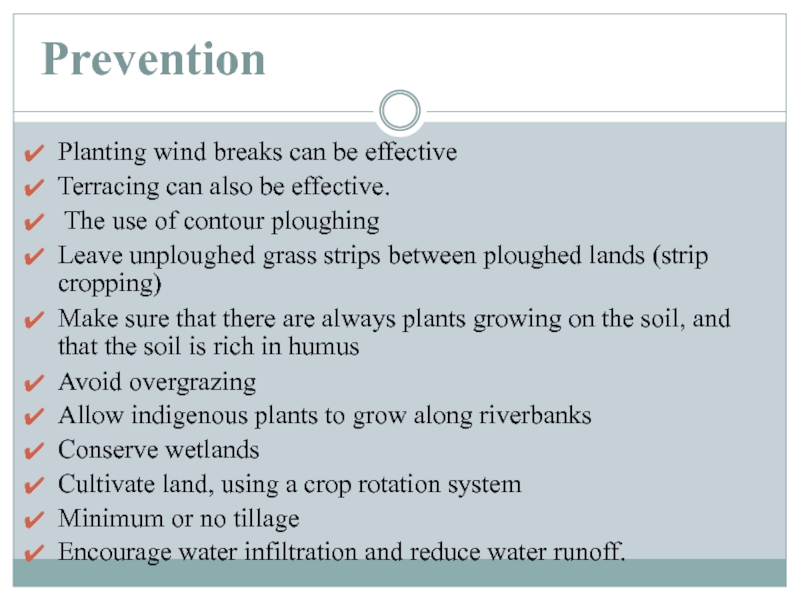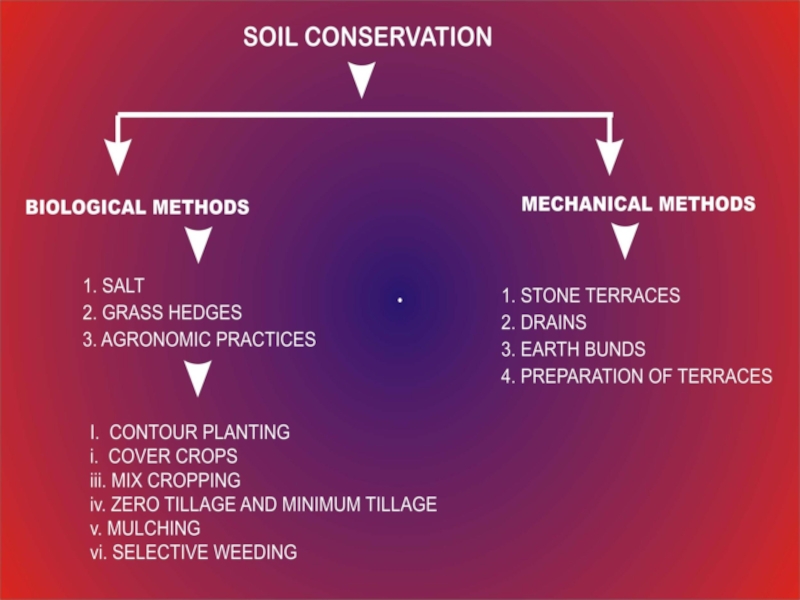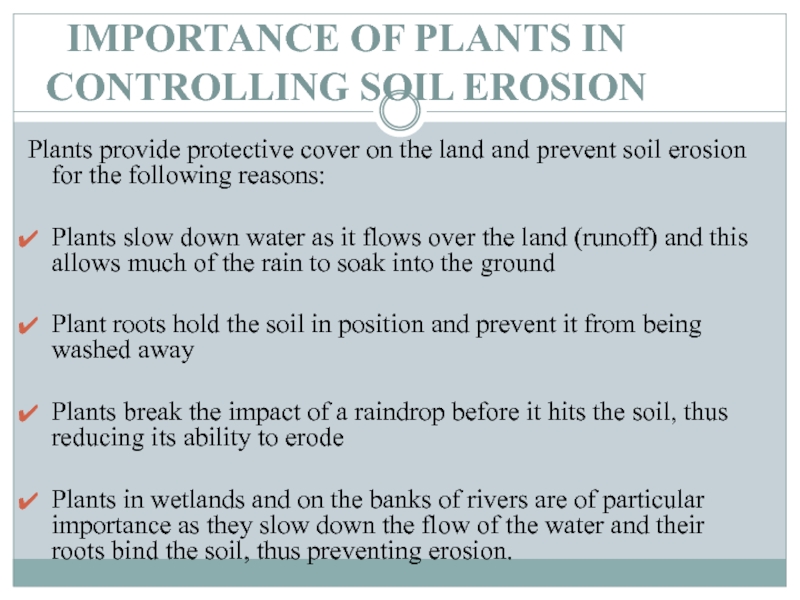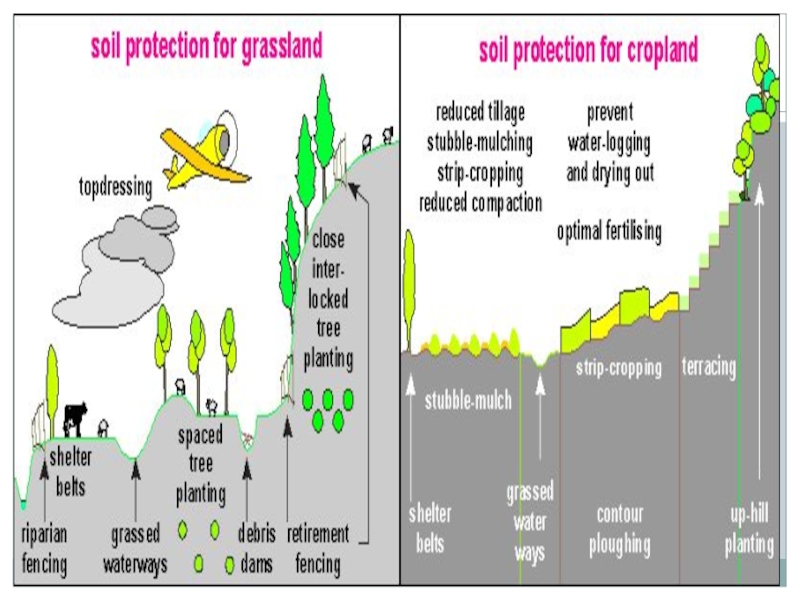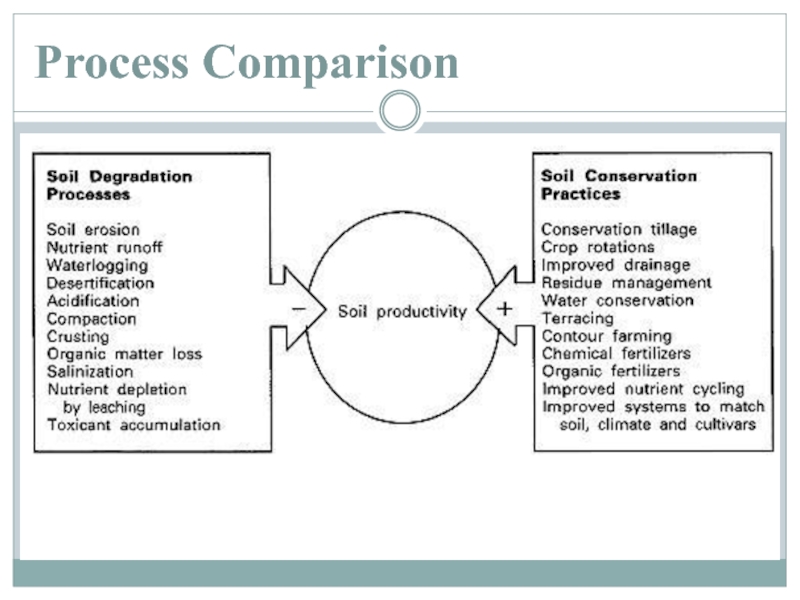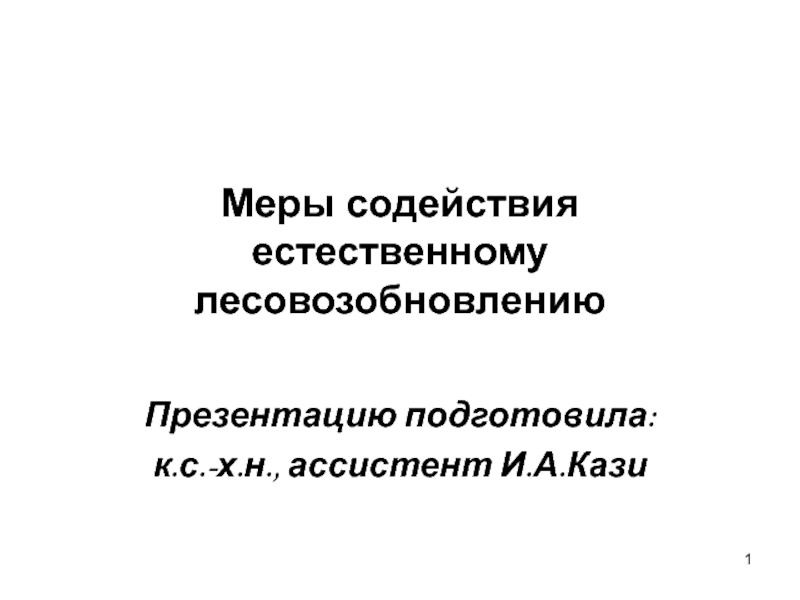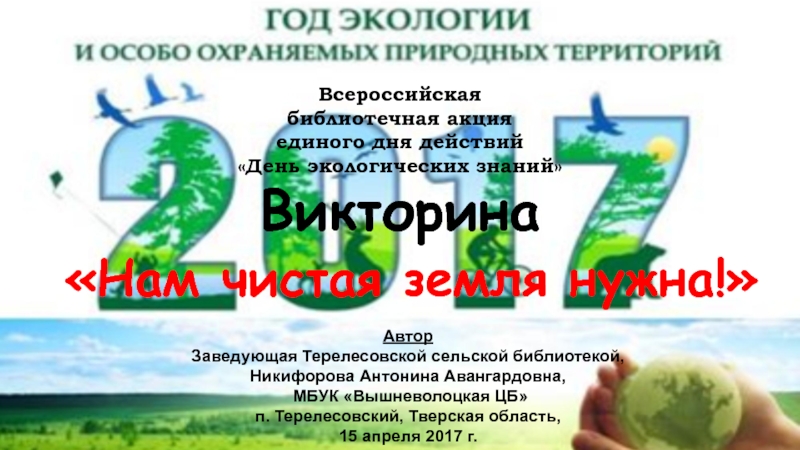- Главная
- Разное
- Дизайн
- Бизнес и предпринимательство
- Аналитика
- Образование
- Развлечения
- Красота и здоровье
- Финансы
- Государство
- Путешествия
- Спорт
- Недвижимость
- Армия
- Графика
- Культурология
- Еда и кулинария
- Лингвистика
- Английский язык
- Астрономия
- Алгебра
- Биология
- География
- Детские презентации
- Информатика
- История
- Литература
- Маркетинг
- Математика
- Медицина
- Менеджмент
- Музыка
- МХК
- Немецкий язык
- ОБЖ
- Обществознание
- Окружающий мир
- Педагогика
- Русский язык
- Технология
- Физика
- Философия
- Химия
- Шаблоны, картинки для презентаций
- Экология
- Экономика
- Юриспруденция
Soil Erosion презентация
Содержание
Слайд 2
Introduction: Soil Erosion
Soil erosion is the washing or blowing away
(by wind or water) of the top layer of soil (dirt).
Erosion also leaves large holes in the earth, which can weaken buildings and even cause them to collapse.
Soil erosion is a natural process. It becomes a problem when human activity causes it to occur much faster than under natural conditions
Soil erosion occurs when soil is removed through the action of wind and water at a greater rate than it is formed. If the soil has eroded, the crops will not grow very well.
Erosion also leaves large holes in the earth, which can weaken buildings and even cause them to collapse.
Soil erosion is a natural process. It becomes a problem when human activity causes it to occur much faster than under natural conditions
Soil erosion occurs when soil is removed through the action of wind and water at a greater rate than it is formed. If the soil has eroded, the crops will not grow very well.
Слайд 3What is soil erosion?
When a raindrop hits soil that is not
protected by a cover of vegetation and where there are no roots to bind the soil, it has the impact of a bullet.
Soil particles are loosened, washed down the slope of the land and either end up in the valley or are washed away out to sea by streams and rivers.
Erosion removes the topsoil first. Once this nutrient-rich layer is gone, few plants will grow in the soil again.
Without soil and plants the land becomes desert like and unable to support life.
Soil particles are loosened, washed down the slope of the land and either end up in the valley or are washed away out to sea by streams and rivers.
Erosion removes the topsoil first. Once this nutrient-rich layer is gone, few plants will grow in the soil again.
Without soil and plants the land becomes desert like and unable to support life.
Слайд 5Causes of soil erosion
Wind and water are the main agents of
soil erosion. The amount of soil they can carry away is influenced by two related factors:
speed - the faster either moves, the more soil it can erode;
plant cover - plants protect the soil and in their absence wind
and water can do much more damage.
Erosion occurs when farming practices are not compatible with the fact that soil can be washed away or blown away. These practices are:
Overstocking and overgrazing
Inappropriate farming techniques
Lack of crop rotation
Planting crops down the contour instead of along it.
speed - the faster either moves, the more soil it can erode;
plant cover - plants protect the soil and in their absence wind
and water can do much more damage.
Erosion occurs when farming practices are not compatible with the fact that soil can be washed away or blown away. These practices are:
Overstocking and overgrazing
Inappropriate farming techniques
Lack of crop rotation
Planting crops down the contour instead of along it.
Слайд 9Prevention
Planting wind breaks can be effective
Terracing can also be effective.
The
use of contour ploughing
Leave unploughed grass strips between ploughed lands (strip cropping)
Make sure that there are always plants growing on the soil, and that the soil is rich in humus
Avoid overgrazing
Allow indigenous plants to grow along riverbanks
Conserve wetlands
Cultivate land, using a crop rotation system
Minimum or no tillage
Encourage water infiltration and reduce water runoff.
Leave unploughed grass strips between ploughed lands (strip cropping)
Make sure that there are always plants growing on the soil, and that the soil is rich in humus
Avoid overgrazing
Allow indigenous plants to grow along riverbanks
Conserve wetlands
Cultivate land, using a crop rotation system
Minimum or no tillage
Encourage water infiltration and reduce water runoff.
Слайд 11IMPORTANCE OF PLANTS IN CONTROLLING SOIL EROSION
Plants provide protective cover on
the land and prevent soil erosion for the following reasons:
Plants slow down water as it flows over the land (runoff) and this allows much of the rain to soak into the ground
Plant roots hold the soil in position and prevent it from being washed away
Plants break the impact of a raindrop before it hits the soil, thus reducing its ability to erode
Plants in wetlands and on the banks of rivers are of particular importance as they slow down the flow of the water and their roots bind the soil, thus preventing erosion.
Plants slow down water as it flows over the land (runoff) and this allows much of the rain to soak into the ground
Plant roots hold the soil in position and prevent it from being washed away
Plants break the impact of a raindrop before it hits the soil, thus reducing its ability to erode
Plants in wetlands and on the banks of rivers are of particular importance as they slow down the flow of the water and their roots bind the soil, thus preventing erosion.
